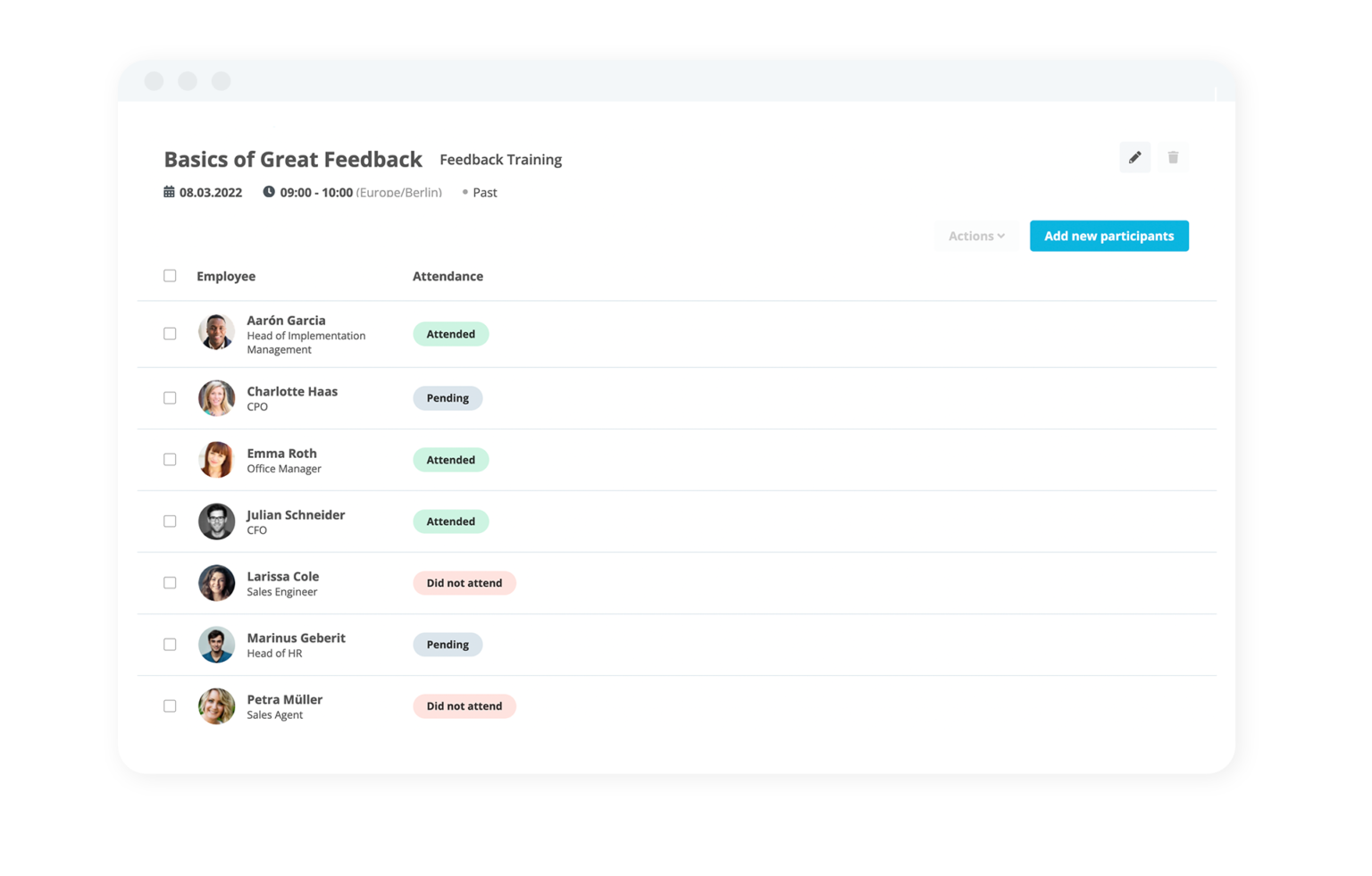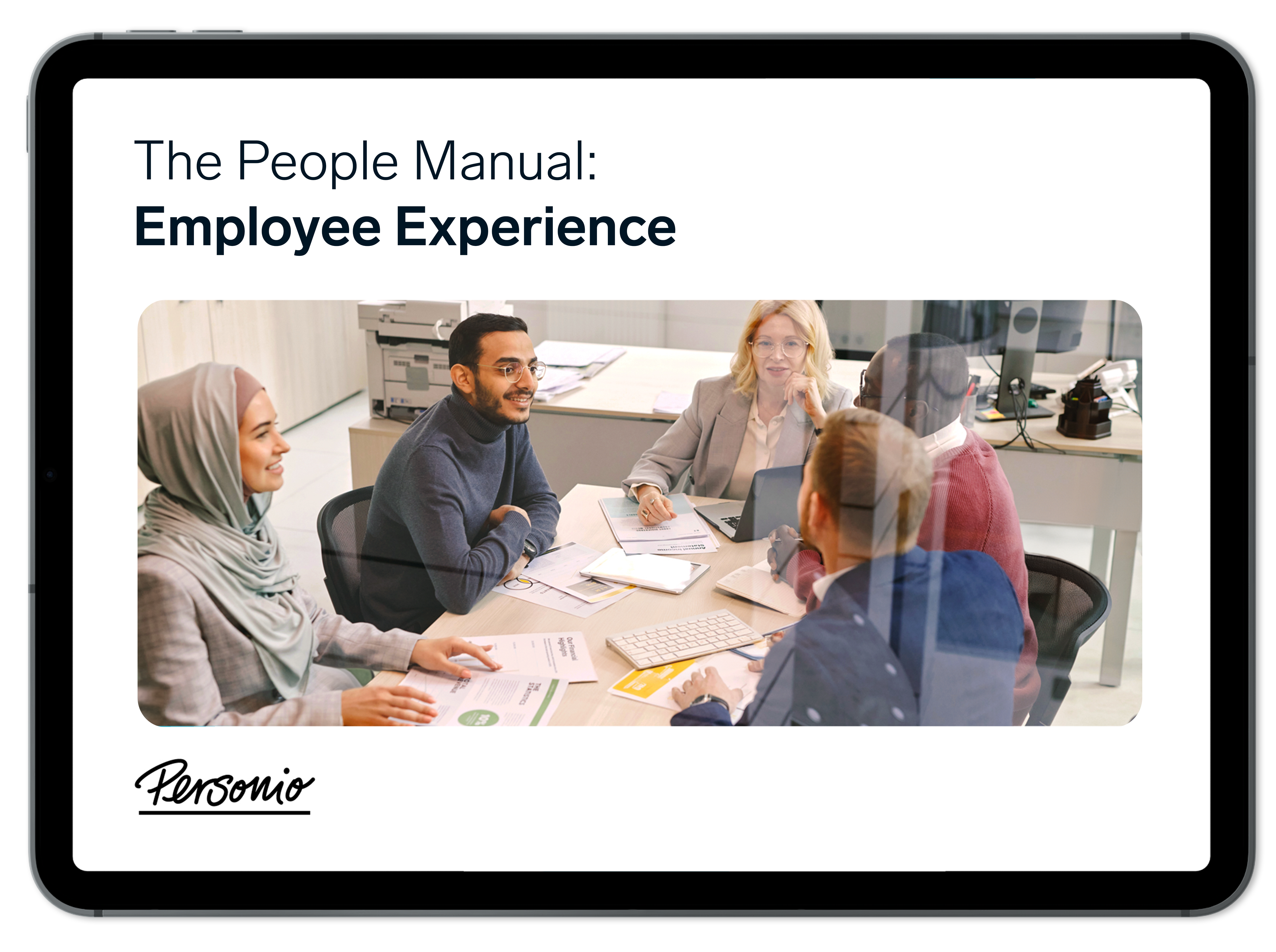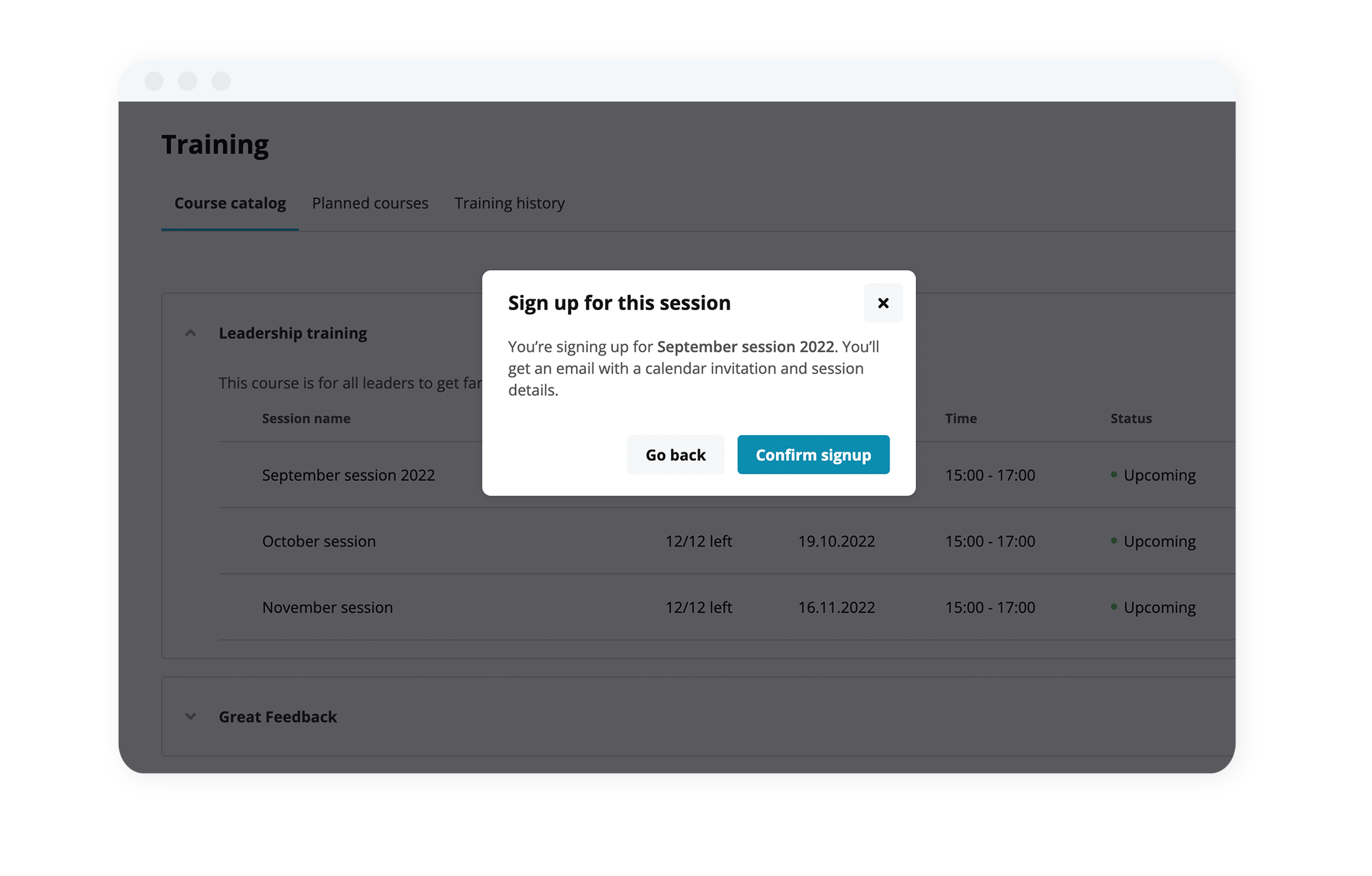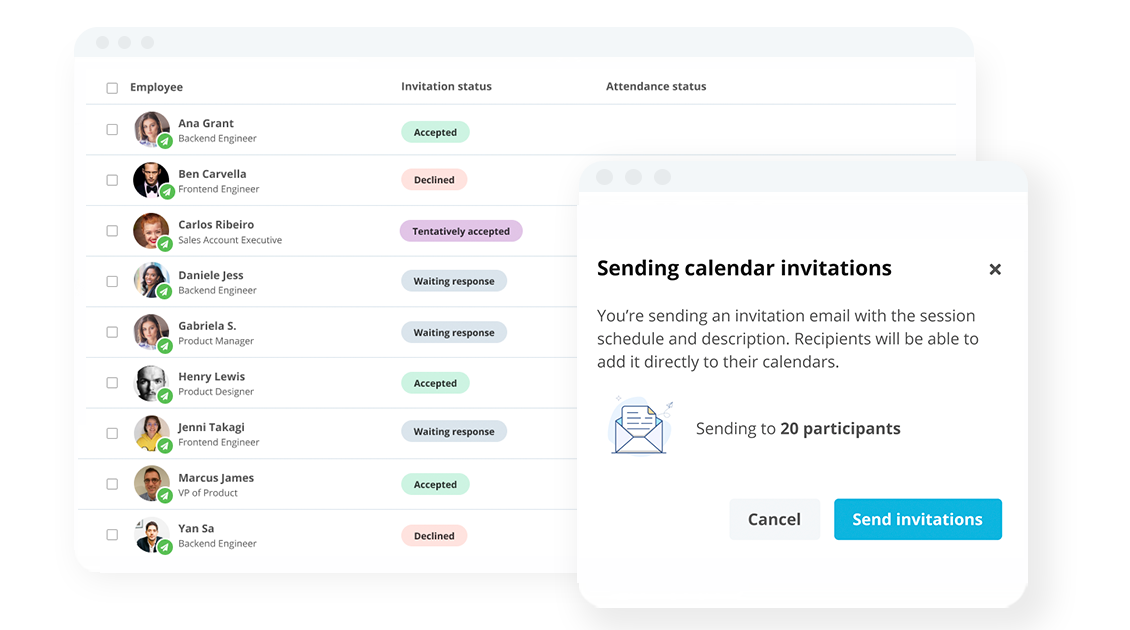Learning and Development (L&D): Ultimate HR Guide

Learning and development (L&D), when done right, has been known to improve workplace culture, bridge skills gaps and increase employee retention rates.
But how? In this article, we'll walk you through the basics of learning and development, your role within it as an HR professional and how you can use it to inspire and enhance your team.
Find out how L&D fits into overall employee experience with our free people manual.Contents
What is learning and development?
Learning and development (L&D for short) encompasses any HR-driven initiatives that foster employee growth, enhance skills and ultimately drive both individual and organisational success.
The purpose of great learning and development is to provide employees with the skills and knowledge they need to grow in their roles while helping the company grow, as well.
Learning and development comes in many shapes and sizes, including online courses, in-person training and mentorships.
70:20:10 rule
The 70:20:10 model is a learning and development framework that suggests that individuals learn most effectively through a combination of three key factors:
70%: Challenging assignments and experiences
20%: Developmental relationships and interactions
10%: Formal training and coursework
The 70:20:10 model is a valuable framework for organisations to design and implement effective learning and development initiatives.
L&D vs. HR: what’s the difference?
While HR oversees the general management of employees, learning and development plays a more specific role within a company.
Human Resources | Learning & Development | Both |
|---|---|---|
General management | Employee growth | Performance management |
Employee relations | Skill development | Succession planning |
Policies & procedures | Training courses | Onboarding |
Organising payroll | Leadership training | Change management |
HR professionals often serve as problem-solvers, with their responsibilities encompassing everything from organising payroll, managing employee relations to recruiting.
Learning and development professionals on the other hand, solely focus on the professional growth and skill development of employees. They focus on training, filling learning gaps, evaluating employees and creating learning opportunities that help employees do their best work.
There is some overlap in L&D and HR responsibilities, most commonly in performance management, succession planning, onboarding, appraisals and change management.

How does company size affect learning and development?
Your L&D team and strategy will depend on the size of your organisation. In smaller organisations, the Chief Operating Officer or Operations Manager may oversee L&D, while larger companies may have an entire L&D department to develop and manage an L&D strategy for your employees.
Learning and development tends to be more formal in larger companies and usually provides more training programs for senior staff members and managers since there are more of them.
In smaller organisations, L&D tends to be more casual, as their teams are more collaborative and tight-knit. For example, they may focus more on social learning (working on a project outside your usual scope of work or with team members in other departments) instead of formalised learning like in-class training.
6 ways learning and development impacts the workplace
Learning and development is every organisation’s secret weapon in building the ideal workplace and workforce. Here’s what you can look forward to when you implement a solid L&D strategy:
1. Creates a positive culture
Investing in your employees’ L&D demonstrates your commitment to their long-term success, which makes them feel more empowered and supported. Plus, it creates a more collaborative and flexible environment; 64% of employees believe learning makes employees more adaptable to change.
Download our complete guide to workplace culture today.
2. Builds employee and company alignment
Today’s workers, especially Gen Z and Millennials, are looking to join companies that enhance the overall wellness of their people, live out their mission statement and make positive changes in the workplace.
For 25% of UK professionals, working for a company that values them is their top career priority and 60% of UK professionals see career development as a very important part of a job offer.
3. Boosts employee retention
Has your company become a revolving door of employees? Is your attrition rate rising or going through the roof? Offering more L&D opportunities and internal mobility can help quash it.
Companies rated highly on employee training saw 53% lower attrition, while employees at companies that offer internal mobility stay almost two times longer. Remember: It’s often more cost-effective to train current employees than hire new ones.
4. Increases engagement and motivation
Did you know that lifelong learning is connected to overall happiness? Employees are often energised when they can learn something new, move up in the company or become experts in their role.
To increase employee engagement and motivation, incorporate community-based learning into your L&D strategy; 92% of L&D professionals believe this learning style helps foster a sense of belonging in their workplace.
Discover the five key metrics to track employee engagement.
5. Improves quality of work and performance
Companies that invest in their employees’ learning are more likely to hit their performance goals, as their teams are more up-to-date on industry information, have stronger skills and are more confident in their abilities.
Many employees are extremely open to improvement, with 83% of Gen Z workers eager to learn skills that will help them perform better in their current roles.
6. Creates stronger brand reputation
Offering L&D initiatives can position your company as a leader in your field, give you a competitive edge and improve the brand’s reputation. Invest in your employees and you’re investing in your business.
All of our L&D resources in one place

Employee experience doesn't need to be complicated – get everything you need to build your L&D and more in our People Manual: Employee Experience edition.
Ready to focus on every element of employee experience? Download our guide.Learning and development 101: How to build your strategy
With the right L&D strategy, you can encourage employee engagement and collaboration across your organisation. Here are the essential elements you should include in your L&D strategy:
Step | Instructions |
|---|---|
1. Define goals and metrics | Outline the numbers that trigger your program and report on its success. |
2. Check L&D inventory | What do you currently have on hand that could feed into an L&D program? |
3. Conduct employee assessments | Identify knowledge gaps in employees by comparing role realities to aspirations. |
4. Define a course curriculum | What specific information needs to make up a prospective L&D curriculum? |
5. Create a tailored process | Make sure your program fits the unique needs of your employees, as well as your culture. |
6. Customise your programs | Blend your learning program to meet the unique needs of your outcomes. |
7. Find an LMS vendor | Choose a Learning Management System (LMS) that meets all of your needs. |
8. Set KPIs and launch plans | Define KPIs to track success and also outline an organisation-wide launch plan. |
9. Build a review schedule | How often will you take up your program and review it? Define that, too. |
As an HR or L&D professional, your role in this process is to lead the charge on analysing your company’s needs, building out learning solutions and delivering them to your team simply and effectively.
1. Define goals and metrics
Learning and development can help bring almost any business strategy to life. What are your organisation’s goals, priorities and vision? More importantly, how can a L&D strategy help your team realise them?
To get started, consult with the appropriate leadership team members, key stakeholders and your talent management strategy to ensure your collective goals and visions are aligned.
It may be best to split responsibilities between the involved leadership team members and the L&D team to guarantee clarity on the project’s budget, timeline, course vendors, course design and employee needs.
2. Check your learning and development inventory
Review all of the current L&D materials to determine what you need to improve, rework, add or remove. Organise by course name, delivery date, course type, course objective and how success is measured.
3. Conduct employee assessments
You have big goals for your employees’ L&D —but are they prepared (and willing) to meet them?
To find out, make a list of required job capabilities for each role in your organisation. Then, assess employees within those roles to see how they match up. You can then design L&D activities that will help bridge those knowledge gaps.
4. Define a course curriculum
First, determine what the L&D program has to include to help you reach your established goals.
If your goal is to get all staff confidently using a new software platform for time tracking, what specific information will they need to know? What questions or roadblocks may they encounter? Will different roles or departments require different curriculums?
5. Create a tailored process
What you include in your program may depend on when it’s delivered to the employee. Consider when the employee will receive this training program, how it fits into their employee experience, how it will impact their workload or progression in the company and how it would affect the onboarding process (if at all).
6. Customise your programmes

Most L&D is based on the 70:20:10 rule, with 70% of training done on the job, 20% through collaboration and 10% through formal training—but how you design and deliver that training is up to you.
Your programme design may include online learning, social learning, ILT (instructor-led training) or a blended learning strategy.
Remember: Most employees want to choose when, how and what they learn, which is why you should develop a personalised learning journey for each employee.
Give them autonomy in their learning, include gamified elements that keep them motivated and provide a continual learning experience that spans a longer period of time.
7. Find an LMS vendor

Most companies deliver employee training through an LMS (Learning Management System). You’ll want to choose an LMS that works with your budget, schedule and program requirements.
That said, the best LMS may be part of an all-in-one solution that helps manage your workforce at each stage of the employee lifecycle. Personio can help recruit, hire, onboard, review and train your employees from one place.
Speak with an expert today to see how we can bring together your employee data with your performance processes, alongside your L&D initiatives.
8. Set KPIs and launch plans

Before you launch your courses, determine which KPIs (Key Performance Indicators) you’ll be using to measure success. This could include course completion rates, the number of courses completed or time spent on each course.
Many LMS vendors automatically analyse and deliver data on course success and completion rates so you can analyse employee progress and update the courses as needed.
Notify employees of their upcoming training, provide sign-up options as needed and schedule in-person training dates well ahead of time. Be sure to set reminders for training and check in with employees on their progress.
9. Build a review schedule
Your courses and training programs should be continually evolving as your industry, company and goals change. Consult with leadership to determine how often you should review your L&D programs, whether it be once a year or once a quarter.
As you review, consider the following:
Are the L&D initiatives still aligned with your business goals?
Are the materials improving employee performance or behaviour as desired?
Are investments and resources being used effectively?
Get started: 6 employee learning and development examples
There are countless ways you can approach L&D. To yield the best results, you’ll want to consider the type of L&D initiative that best delivers the course materials, speaks to your employees and helps you reach your goals:
1. Personal Development Programs | If you want to provide employees with the autonomy they crave in education, help them create personalised development plans tailored to their goals, role and learning preferences. |
|---|---|
2. Online Learning | Online learning platforms can include everything from reading materials to webinars, videos, audio clips, chatrooms and more. Gamification elements like quizzes, leaderboards and rewards help to incentivise learners. |
3. On-Demand Training | On-demand training, also known as Just-In-Time-Training (JITT), provides employees with immediate training the moment they need it. For example, a short training course on the ins and outs of the product right before a sales call. |
4. Mentorship Programs | By partnering junior and senior-level employees, you’re providing them with on-the-ground experience and helping to build a stronger community and better workplace culture. |
5. Social Learning | Social learning allows employees to rotate through departments to learn new skills and develop a stronger understanding of the business overall. |
6. Financial Assistance | Providing tuition assistance or an open L&D development budget for the year. This allows the employee to invest in learning and development courses, programs or classes that fit their role, goals or learning style (as approved by HR). |
As an HR or L&D professional, you can help employees become the best workers they can be and achieve well beyond their goals. It all starts with a tailored, collaborative approach to your organisation’s L&D strategy.

